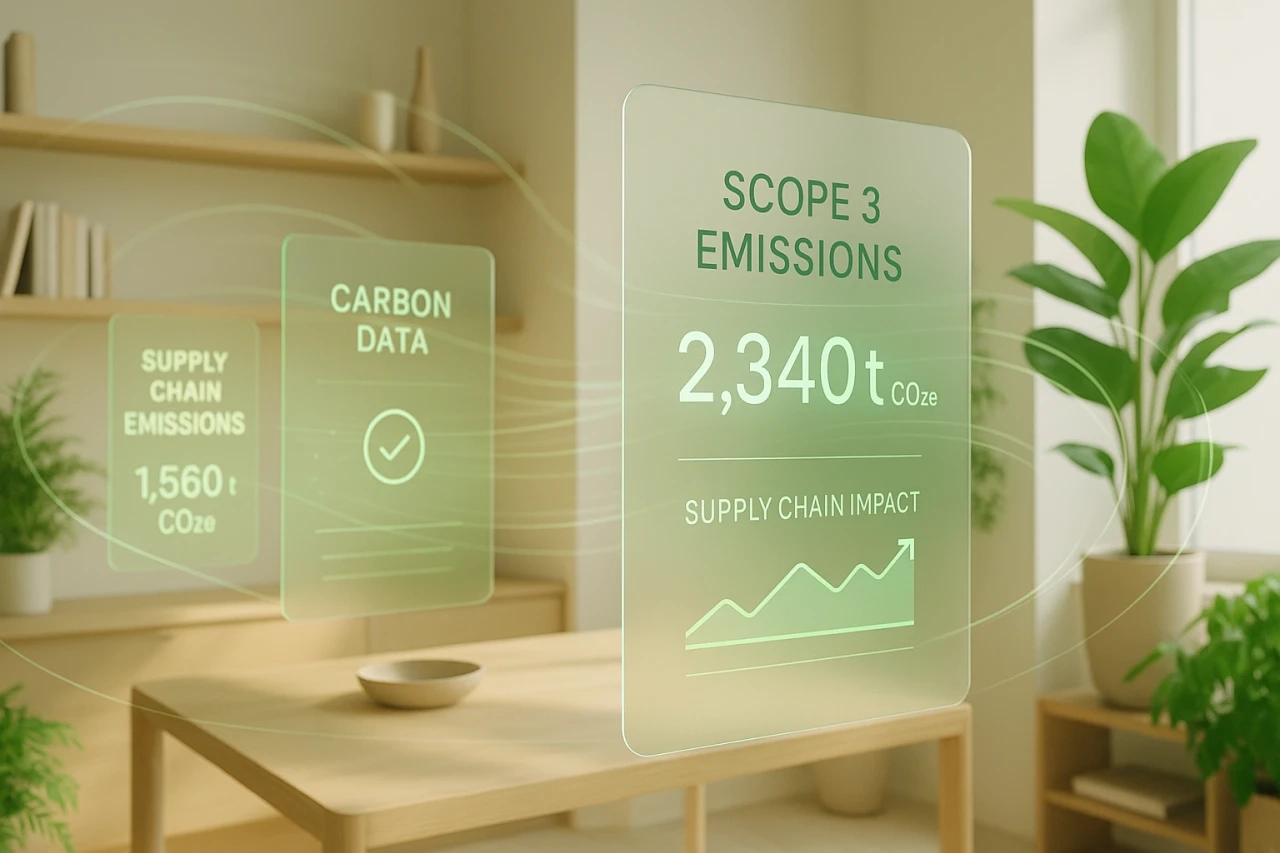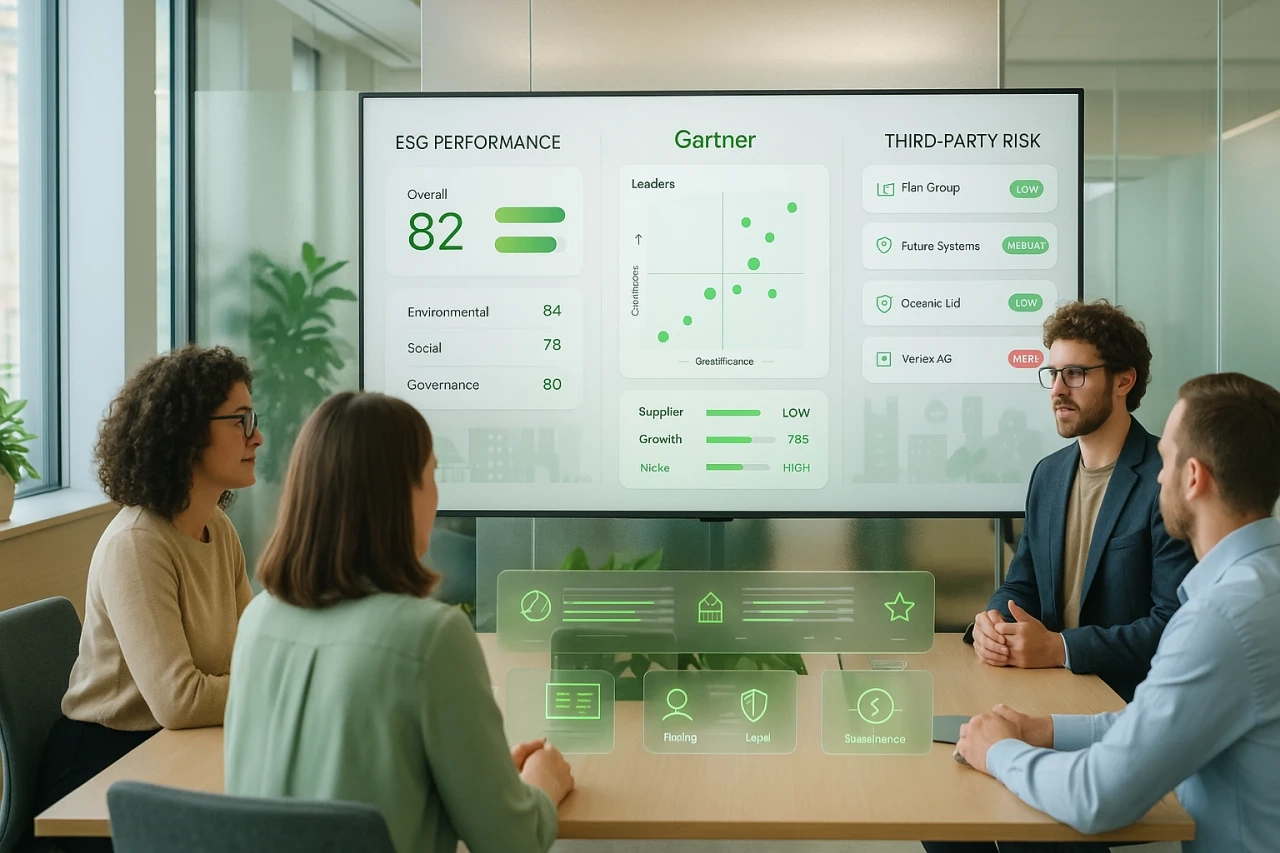Scope 3 Data Collection Methodology: Structuring Third-Party Governance for CSRD Compliance

The transition toward robust environmental reporting, particularly under the CSRD framework, requires both public and private organizations to thoroughly evaluate their indirect emissions, also known as Scope 3. This obligation goes far beyond regulatory compliance. In public housing, government procurement, industrial or retail sectors, the ability to structure solid third-party governance is now critical to the overall performance of an organization’s carbon footprint.
Why Is Scope 3 Crucial for Environmental Reporting?
Analyzing Scope 3 emissions provides a comprehensive view of an organization’s value chain impact. Unlike Scope 1 and 2, Scope 3 includes greenhouse gas emissions (GHG) generated throughout the lifecycle of purchased goods and services — from sourcing, manufacturing, and transportation to usage and end-of-life.
This extended carbon accounting reframes collaboration with third parties as central to any effective operational resilience strategy. On average, indirect emissions account for 70% of a company’s total carbon footprint, making their control a major strategic concern.
Amid rising regulatory expectations — including CSRD and GHG Protocol-derived standards — reliable Scope 3 reporting is no longer just a defensive exercise. It has become a driver of industry innovation: from eco-design in construction to low-carbon logistics in retail, and responsible procurement in the public sector.
What Are the Challenges of Large-Scale Scope 3 Data Collection?
While internal activity data collection is often well structured, gathering and quantifying emissions from outsourced activities requires efficient dialogue with a wide array of stakeholders. The complexity of data flows within the value chain and the lack of standardization among third parties complicate the data collection methodology.
According to the Global CSRD Survey 2024 by PWC, organizations subject to CSRD face major hurdles managing ESG data from their suppliers. These include the required granularity of data, data inconsistencies or lack of standardized formats, and challenges around consent for environmental data collection.
A proactive approach — including Scope 3 clauses in early-stage contracts — helps mitigate these risks, prevent supplier fatigue, and build lasting trust with suppliers.
Data Collection Strategy: What Are the Key Steps for Successful Scope 3 Reporting?
Define a Sector-Specific Perimeter
Each industry — public housing, construction, e-commerce, or industrial — faces unique Scope 3 emission risks. In the public sector, new public-sector-focused enterprise APIs simplify access to environmental data.
For ICPE-regulated industries, prioritizing high-GHG supplier categories already shows tangible results. In public procurement, environmental clauses focused on Scope 3 are increasingly embedded in tenders.
Identifying the highest-emission areas requires input from business teams, IT, and external partners. From there, a progressive, collaborative evaluation plan — rather than a coercive one — can be developed.
Equip Yourself with the Right Tools for High-Volume Activity Data Collection
To meet CSRD transparency requirements, organizations need dedicated third-party governance systems to manage Scope 3 activity data. This includes building sector-specific questionnaires aligned with the GHG Protocol to streamline responses while protecting sensitive information.
In construction, TELT’s experience managing 4,500 partners proves the value of centralized governance of critical third parties. Their model efficiently integrates both regulatory compliance and environmental performance.
Campaign success depends on ease of use for stakeholders. Processes must reduce administrative burden, prevent supplier fatigue, and enable real-time monitoring through shared indicators.
Train Internal Teams and Educate External Partners
Education is key on both sides: internal teams must master Scope 3 data strategies and access relevant info, while third-party partners need clear communication, reminders of contractual obligations, and encouragement for mutual progress.
What Optimization Levers Exist for Scope 3 Reporting?
Develop Sector-Specific Reference Frameworks Aligned with the GHG Protocol
Robust environmental reporting requires choosing the right indicators — both GHG Protocol-compliant and sector-specific. For industries, tailoring emission factors by product or process family enhances the relevance of supplier-provided carbon data.
This foundational work, co-developed with stakeholders, reinforces data quality and anticipates regulatory changes. Harmonization with 2025 ESG and supply chain challenges ensures consistency and long-term alignment.
Automate and Secure Value Chain Interactions
Reliable Scope 3 reporting depends on ongoing, traceable communications with suppliers. Automated workflows and secure data-sharing systems reduce information loss, minimize manual input, and prompt faster responses from partners.
In retail and marketplace environments, centralizing all exchanges on a single platform allows stakeholders to access their reporting history and consolidated results. This aligns well with ongoing retail sector transformations.
Concrete Use Cases for Scope 3 Reporting
Public Procurement Optimization and Environmental Criteria
In public tenders, factoring in Scope 3 changes the purchasing dynamic. Heavier weighting of environmental criteria now favors bids offering full carbon traceability — including subcontractor consumption data.
This shift strengthens both the procuring entity’s institutional credibility and third-party engagement. Our experience with TPRM deployment in the public sector illustrates this transformation.
Construction Site Monitoring and GHG Reduction from Third Parties
The construction industry faces increasing pressure to disclose its environmental footprint. Homogeneous data collection across subcontracting lots enables identification of high-impact decarbonization levers.
By aggregating and analyzing real activity indicators (materials, transport, utilities), project owners can refine purchasing strategies, improve planning, and accelerate access to eco-performance certifications. This aligns with BTP decarbonization challenges.
Best Practices for Long-Term Operational Resilience in Scope 3
A collaborative, transparent approach not only improves reporting robustness, but also aligns the value chain around shared GHG reduction goals:
Embed environmental data-sharing clauses
in contracts from the start to avoid future roadblocks.
Deploy standardized tools
co-approved by business, IT, and compliance teams to simplify adoption.
Run regular training workshops
for all value chain links to maintain engagement.
Implement annual shared reporting
with third parties, including feedback loops to improve collection.
Use recognized standards
(GHG Protocol, ADEME factors) to ensure data comparability and calculation accuracy.
A well-structured, large-scale data collection strategy is now a key enabler of ecological transition and operational resilience in the face of evolving regulatory demands.
These articles might interest you
-
 12 May 2025Understanding the Impact of the NIS 2 Directive on the Supply ChainSecteurThe modern supply chain forms the backbone of European economies, orchestrating complex flows between partners, suppliers, and subcontractors. With the acceleration of digitalization, this growing interconnection exposes organizations to unprecedented cyber vulnerabilities. The NIS 2 directive, effective since October 2024, is revolutionizing the cybersecurity approach by mandating collaborative evaluation of third-party partners. This regulatory shift […]
12 May 2025Understanding the Impact of the NIS 2 Directive on the Supply ChainSecteurThe modern supply chain forms the backbone of European economies, orchestrating complex flows between partners, suppliers, and subcontractors. With the acceleration of digitalization, this growing interconnection exposes organizations to unprecedented cyber vulnerabilities. The NIS 2 directive, effective since October 2024, is revolutionizing the cybersecurity approach by mandating collaborative evaluation of third-party partners. This regulatory shift […]Read more
-
 14 May 2025Environmental Criteria for Third-Party Partner EvaluationSecteurMore and more companies are incorporating environmental preservation into their overall strategy. Whether through sustainable practices or compliance with the CSRD (Corporate Sustainability Reporting Directive), these organizations aim to reduce their ecological footprint. The evaluation of suppliers plays a crucial role in this process, using various environmental criteria to ensure a responsible supply chain. What […]
14 May 2025Environmental Criteria for Third-Party Partner EvaluationSecteurMore and more companies are incorporating environmental preservation into their overall strategy. Whether through sustainable practices or compliance with the CSRD (Corporate Sustainability Reporting Directive), these organizations aim to reduce their ecological footprint. The evaluation of suppliers plays a crucial role in this process, using various environmental criteria to ensure a responsible supply chain. What […]Read more
-
 23 June 2025How to Select Priority KPIs or KRIs for Third-Party MonitoringSecteurIn third-party governance, tracking key performance indicators (KPIs) has become a central component in meeting rising expectations for operational resilience. Operations managers and compliance officers now expect dynamic dashboards that clearly rank the risks associated with each third-party partner while taking into account industry specifics and risk profiles. According to a Grant Thornton study, only 45% […]
23 June 2025How to Select Priority KPIs or KRIs for Third-Party MonitoringSecteurIn third-party governance, tracking key performance indicators (KPIs) has become a central component in meeting rising expectations for operational resilience. Operations managers and compliance officers now expect dynamic dashboards that clearly rank the risks associated with each third-party partner while taking into account industry specifics and risk profiles. According to a Grant Thornton study, only 45% […]Read more
-
 11 June 2025Decoding Gartner Evaluation Criteria for European Third-Party Governance PlatformsSecteurAs third-party governance becomes a cornerstone of operational resilience for organizations, Gartner’s Magic Quadrant evaluation standards stand out as an essential benchmark. However, their application within the European market demands a methodical adaptation to incorporate regulatory compliance with DORA, NIS 2, and CSRD, while ensuring data sovereignty and security. This dual imperative shapes how decision-makers in the […]
11 June 2025Decoding Gartner Evaluation Criteria for European Third-Party Governance PlatformsSecteurAs third-party governance becomes a cornerstone of operational resilience for organizations, Gartner’s Magic Quadrant evaluation standards stand out as an essential benchmark. However, their application within the European market demands a methodical adaptation to incorporate regulatory compliance with DORA, NIS 2, and CSRD, while ensuring data sovereignty and security. This dual imperative shapes how decision-makers in the […]Read more



